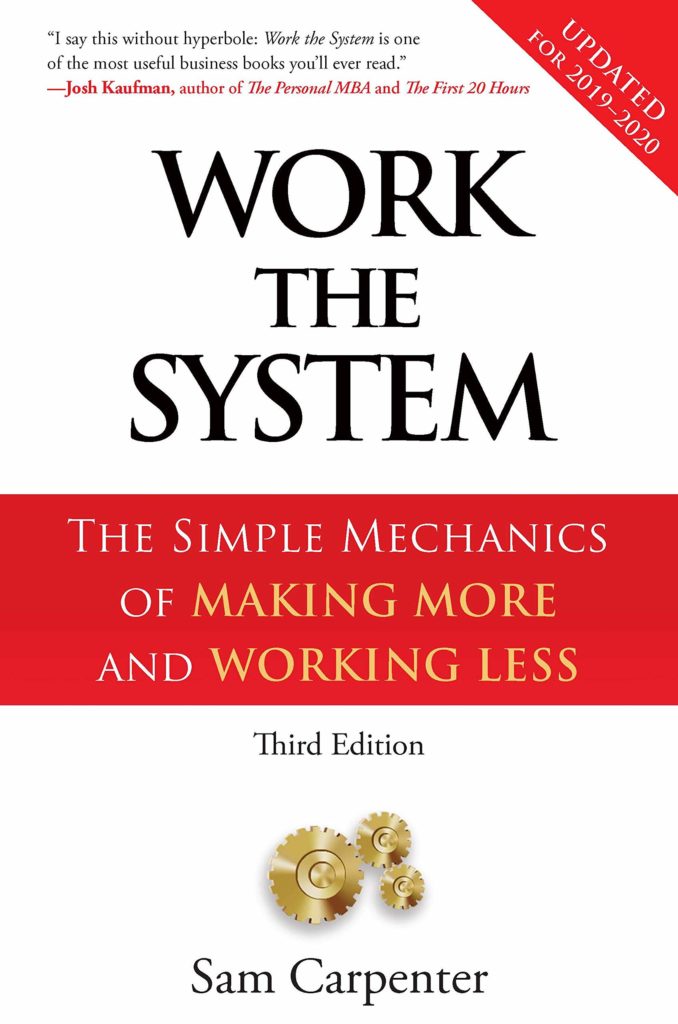Running a business isn’t easy. But it’s even harder when you don’t have business systems in place and your business starts running you.
From what I’ve seen, a lot of small business owners try to manage their marketing, sales, product or service fulfillment, and (in some cases) their employees all at once.
And that’s just the tip of the entrepreneurial iceberg.
You might be the one managing compliance and liability issues or putting out fires when clients have problems with your services.
You might be wondering, “Am I running my business…or is it running me?”
Trust me, if you aren’t asking yourself this question now—you will.
Do You Know the Signs of Entrepreneurial Stress?
Economic downturns, losing clients, growing competition, and employee turnover can slowly chip away at your mental, emotional, and physical health.
I’ve been there and done that.
Business owners often struggle with confusion, poor concentration and memory, and a lack of engagement.
In fact, researchers at Southeastern Oklahoma State University have outlined common emotional and physical symptoms of “entrepreneurial stress”:
Emotional Symptoms
- Negativity
- Depression
- Disappointment
- Low self-esteem
- Mood swings
- Loss of commitment
- Irritability
- Loneliness, Withdrawal
Physical Symptoms
- Changes in eating habits
- Differences in sleep patterns
- Increased drinking
- Drug use
- Smoking
- Muscle tension
- Digestive issues, and
- High blood pressure
(Source: Bressler, Martin and Linda. Minding Your Business: How Entrepreneurs Manage Stress. International Conference Proceedings. Institute for Global Business Research. 2020.)
Do any of these strike a chord?
Now think about how often small business owners stop taking care of themselves, making them even less resilient to work stress. Eating healthy and getting enough sleep become afterthoughts.
The startup world seems to be all about the “grind”, and business owners are convinced they have to work ‘round the clock if they’re ever going to succeed.
But here’s the real problem folks…
A lot of business leaders and “influencers” keep selling this idea—resulting in the “hustle porn” that Inc.com calls “the latest toxic scourge to hit entrepreneurs”.
Run Your Business Better
Systems don’t need to be as complicated as they sound. They can range from well-designed and maintained to ineffective and ignored.
A system is an outline of the steps that you or your team need to take for some business process to occur. A system defines the people, tools, actions, and results.
It’s that simple.
In his influential book Work the System, Sam Carpenter describes systems as the “invisible threads that hold the fabric of your life together”.
He shares three steps to the systems process:
1. Separation/Dissection/Repair: You need to analyze and correct the systems you already have in place. You might need to create new systems while getting rid of the ones that are standing in the way of you and your goals.
2. Documentation: You need to document your goals and the processes that will help you achieve them. This will guide all of your business decisions and actions.
3. Long-term maintenance: You have to maintain your systems over time. Revisit your systems and take the steps needed to keep them working.
The systems you use will depend on the work you do, what your clients expect, your business goals, changes in your industry, and other factors.
But the principles are the same.
Have a systemized approach to completing your daily tasks so you can move closer to your professional (and personal) goals.
Systems create balance in your life—something we could all use!
They help you maintain a firm grip on your business—instead of your business having its grip on you.

Business Systems First…Automation Second
Everyone seems to be focused on automation. Can you blame them?
Tools that do the work for you might seem a lot sexier than anything involving “processes” and “documentation”.
But when any process depends on one person or group, then there’s a bigger risk that something could go seriously wrong.
Systems let you run a profitable business and allow someone else to step in your shoes and do the work without any hiccups.
They remove risk while making it easier to grow, scale, or even sell your business profitably.
A Simple Way to Develop Systems for Any Business
Systems are drop-dead simple, and so are the steps to creating, using, and improving them.
First, identify the processes that absolutely have to get done in your business each day and put them in a list or chart.
Next, figure out who’s doing what to complete those processes.
Who’s answering sales calls?
Who’s responding to client questions?
Who’s handling the money?
Finally, set up standard operating procedures (SOP) for each process.
SOPs are your systems. Write down how these processes are completed, so that anyone can step in and quickly take over when you need it.
Business growth depends on your ability to make important decisions so that you save more of your most important asset: your time.
Get Back to Running Your Business in
If you want to dig deeper on the ways systems can work for your business, here are three great reads:
Your business has unique needs and requires unique systems.
A business consultant, mentor, or coach can give you the personalized help you need.
An outsider can give you an objective perspective so that you avoid costly mistakes that can get in the way of your growth.
Systems aren’t complicated. But they can take your struggling business and make it more efficient and effective–practically overnight.
Best of all, you can be in control again.
Don’t let your business run you. Figure out what needs to get done every day, and make it easy for you or your team to get it done—no matter who’s in charge.







+ Show Comments
- Hide Comments
Add a Comment